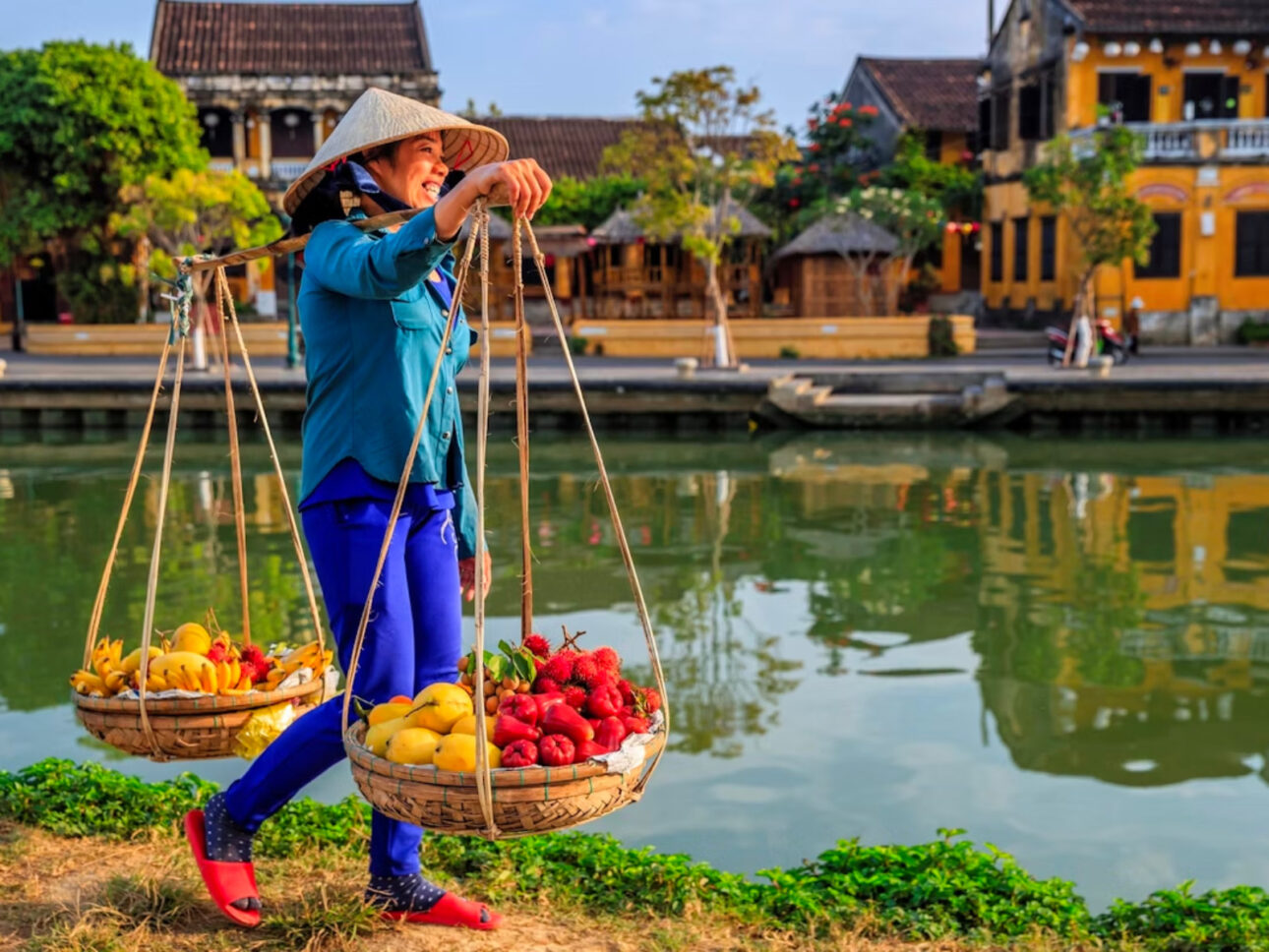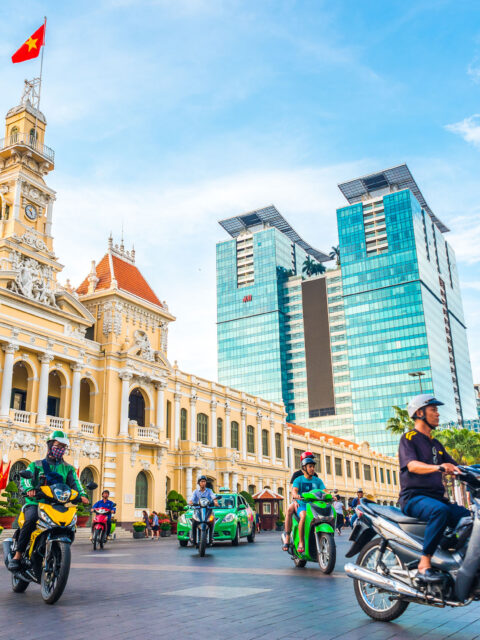Vietnam, a land of mesmerizing diversity and cultural richness, beckons travelers with its captivating landscapes, historic treasures, and vibrant traditions. As you embark on the journey of exploring this Southeast Asia gem, one crucial consideration stands paramount: the best time to visit Vietnam.
This article serves as an impartial guide, dedicated to aiding travelers in their quest to pinpoint the ideal time for their Vietnamese adventure. So, whether you’re seeking cultural enrichment, outdoor exploration, or simply an escape from the every day, let us assist you in making informed decisions to unlock the splendors of Vietnam, regardless of your travel aspirations!
Explore the list of the top things to do in Vietnam with our guide!
Contents
How To Choose The Best Season To Visit Vietnam?
Before you decide to visit Vietnam, it’s important to grasp the country’s diverse climate. From the rugged north to the tropical south, Vietnam’s weather is shaped by its varied landscapes. This creates distinct seasons that impact different regions. Whether you’re exploring the north, central areas, or the south, knowing what to expect weather-wise will guide your travel plans and help you make the most of your journey.

High Season (June-July): Energizing Summer Season
June and July mark Vietnam’s High Season, bustling with energy as Dutch and Vietnamese school holidays coincide. Airports thrive with activity, and flights can be in high demand, especially for Southeast Asian adventures. However, it’s worth planning ahead due to elevated prices for accommodations and flights in this peak season. Early bookings ensure seamless travel and optimal deals.
Low Season (September-October): Tranquil Allure
From September to October, the Low Season beckons with tranquility and affordability. Reduced crowds create a serene atmosphere, ideal for those seeking a more intimate connection with Vietnam’s wonders. While rain showers are possible, it’s still the best time to visit Vietnam in some ways. Since it’s a trade-off for budget benefits, as accommodations and attractions offer traveler-friendly prices.
Rainy Season (April-October): Nurturing Growth
Embracing Vietnam’s Rainy Season (April to October) unveils a different charm. This is also monsoon season in Vietnam. With fewer tourists, the cultural experience deepens, while bargains abound for accommodations and tours. Yet, be mindful of mosquitoes and outdoor limitations during heavy downpours. While the typhoon season (August to November) poses a slight risk, diligent weather monitoring can ensure a safe and rewarding journey.
Best Time To Visit Vietnam – From North to South
Vietnam’s enchanting landscapes and diverse culture are deeply intertwined with its unique climate, which shifts dramatically across its different regions. From the vibrant capital city of Hanoi in the north to the bustling metropolis of Ho Chi Minh City in the south, each region boasts its own distinct weather patterns that play a pivotal role in shaping the travel experience.
In this segment, we delve into the intricacies of Vietnam’s weather across its northern, central, and south Vietnam. Understanding the weather nuances in each area is not only crucial for packing the right attire but also for crafting an itinerary that aligns seamlessly with the local climate, ensuring an unforgettable journey through this captivating country.
Exploring Northern Vietnam’s Seasons
Northern Vietnam, encompassing Hanoi, Halong Bay, Ninh Binh and mountainous far north like Sapa, and Mai Chau, reveals its charm through distinct winter and summer seasons. The dry winter months, spanning November to April, offer average temperatures of 17-22°C, creating an ideal environment for exploration. Hanoi’s historical sites beckon, Halong Bay’s iconic karsts gleam under clear skies, and Sapa’s misty terraced fields captivate trekkers.
The rainy season, from May to October with its peak in July to September, showers the region with life. While outdoor activities might be hindered, this is the time to uncover Mai Chau’s and Ninh Binh’s rural splendor. Verdant mountains and rice paddies come alive, offering a different, tranquil perspective on northern regions natural beauty. Whether you prefer the brisk allure of winter or the lush charm of the rainy season, Northern Vietnam presents an authentic and captivating journey.

Venturing Central Vietnam
Central Vietnam, home to Hoi An, Da Nang, and Hue, offers distinct experiences across its seasons. From February to August, the region enjoys warm and dry weather, with temperatures reaching the mid-30s Celsius. This High Season is perfect for exploring the enchanting beaches of Da Nang and the historic charm of Hoi An’s ancient town for best beach weather with sunny skies and tropical climate. Tourists can relish outdoor activities, cultural immersions, and vibrant local life.
Come September to January, Central Vietnam enters its Low Season, marked by increased rainfall, peaking in October and November. While this period might be wetter, it brings lush greenery to the landscapes and fewer crowds, allowing a more intimate exploration. Those who embrace the rain can find beauty in Da Nang’s Marble Mountains and the atmospheric streets of Hoi An. Regardless of the season, Central Vietnam captivates with its rich history and natural allure, ensuring an unforgettable experience.
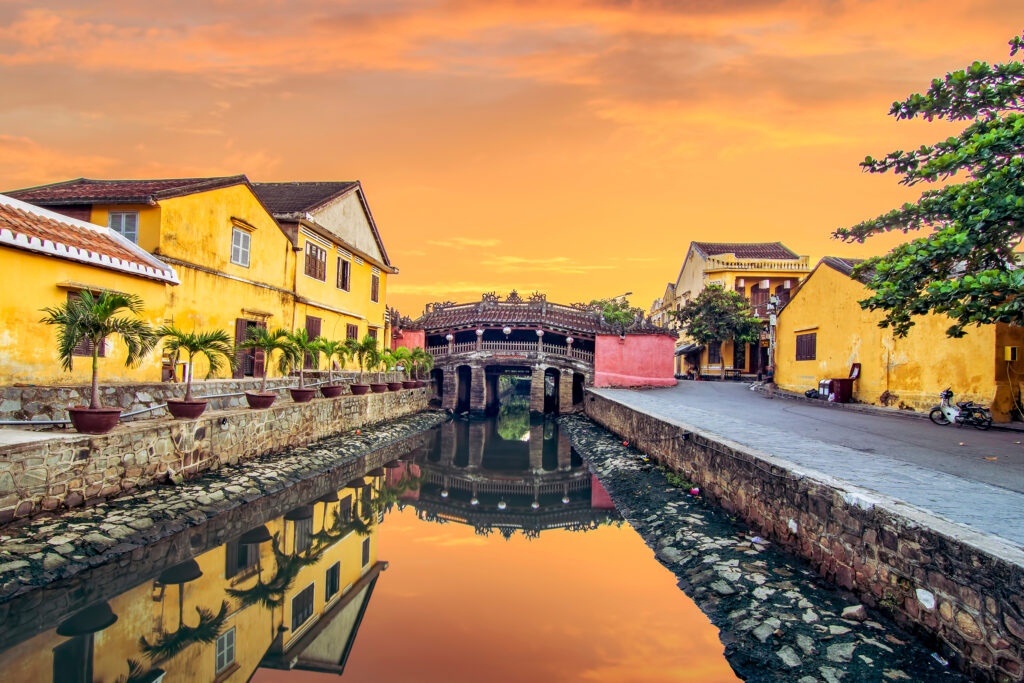
Experiencing Southern Vietnam
Southern Vietnam, including Ho Chi Minh City, Mekong Delta, Mui Ne, and Phu Quoc, experiences just two distinct seasons: the dry season (November – April / Beginning of May) and the wet season (May – Early November).
During the dry season, from November to April, the region enjoys consistent temperatures and minimal rainfall, making it ideal for exploration. Touring Ho Chi Minh City bustling streets, cruising the Mekong Delta tranquil waterways, and indulging in Mui Ne’s natural wonders are perfect activities during this time. In the later dry season, humidity increases, leading into the wet season, which lasts from May to early November. While rain is more frequent, it’s often in short bursts, providing breaks for outdoor adventures.
Visiting Vietnam and engaging in Vietnamese culture, indoor explorations, and spa retreats can be just as rewarding during the wet season, showcasing a different side of Southern Vietnam’s allure. Travelers can choose between vibrant dry months and the lush, authentic charm of the wet season based on their preferences.

Weather By Month – Explore The Best Time To Visit Vietnam!
Vietnam’s ever-changing landscapes are complemented by its unique climate, which varies dramatically across the country’s different regions and seasons.
Each month unveils a new facet of Vietnam’s weather, presenting travelers with distinct opportunities to immerse themselves in its beauty. From the chilly mornings of the north, and central highlands to the sun-drenched beaches of the south, and the vibrant festivals that mark the calendar, understanding the weather by month is crucial for a well-rounded exploration of this captivating destination.
In this section, we delve into the intricate tapestry of Vietnam weather, offering insights into what to expect and how to make the most of your journey, no matter when you decide to visit.

January
As the calendar turns over, January presents an intriguing mix of weather patterns across Vietnam. Throughout most of the country, dry and comfortable conditions prevail, providing a pleasant atmosphere for exploration. However, a notable exception lies in northern Vietnam, where places like Sapa and Ha Giang experience dramatic drops in temperatures, especially during the mornings and evenings. This cold winter weather adds a unique touch to the mountainous landscapes, creating an opportunity for cozy experiences and awe-inspiring views.
For those with a penchant for beach escapades and guaranteed sunshine, Phu Quoc emerges as the ideal destination. Its inviting shores and azure waters offer respite from the cold, making it a hotspot for travelers seeking warmth. Yet, travelers should be aware that Halong Bay, while captivating, may appear slightly hazy during this time, potentially impacting visibility and panoramas.
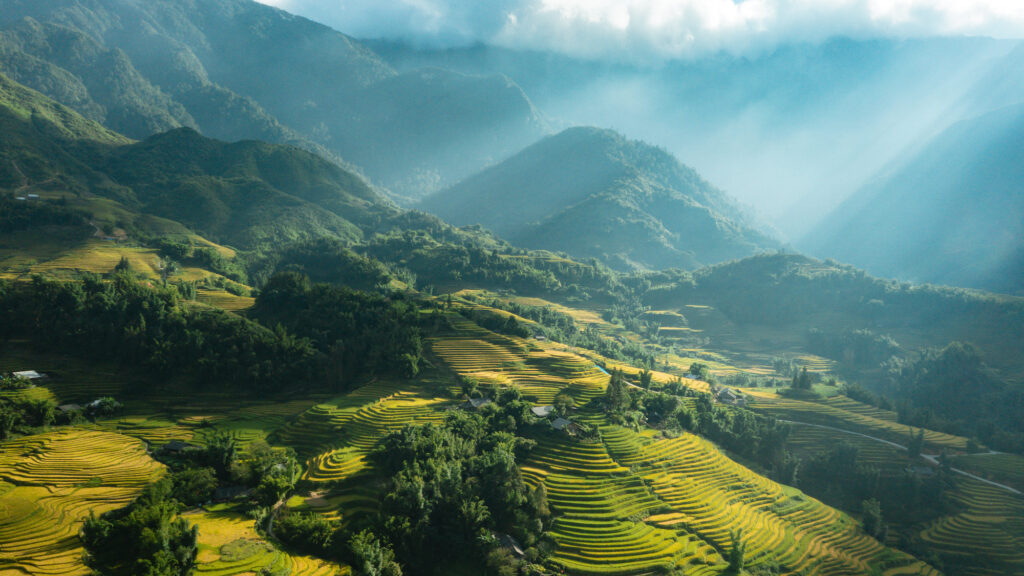
February
February marks the gradual transition into warmer and drier conditions for most parts of Vietnam, bidding adieu to the cooler mornings in the northern reaches. As the temperature rises, the majority of the country experiences a shift towards hot dry weather, inviting visitors to explore its diverse landscapes. However, North Vietnam continues to retain its relatively cooler atmosphere. Therefore, trekking and cycling in north and central Vietnam in this month is also a good choice!
It’s important to note that February is also the month of TET, the Vietnamese New Year. This celebration brings forth a unique cultural experience but also entails a temporary closure of numerous establishments. Shops, museums, and restaurants often shut down for about a week during this period, impacting the availability of services for travelers. This celebration marks the best time to visit Vietnam!
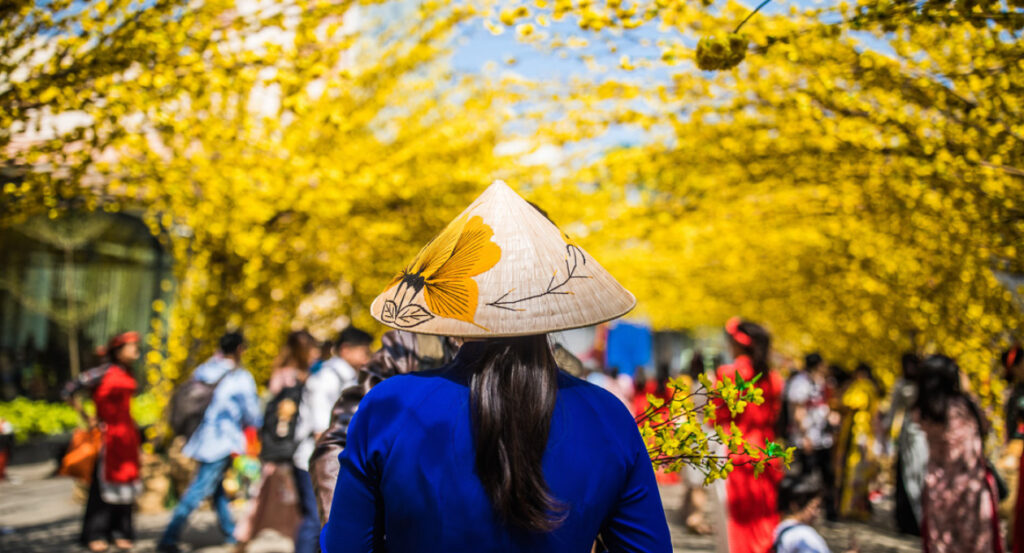
March
March proves to be the best time to visit Vietnam. This month heralds the peak of high season in Vietnam, making it an opportune time to embark on a comprehensive exploration of the country’s wonders. During this period, the weather is at its finest, creating a comfortable and inviting environment for travelers. It’s also a season of choice for beach enthusiasts, with various destinations offering pleasant weather conditions.
Mui Ne, Con Dao, and Nha Trang in Central Vietnam beckon with sunny days and soothing waves, presenting excellent opportunities for beach activities and relaxation. As March draws to a close, Hoi An in the central coast emerges as a captivating beach destination, where travelers can bask in the sun’s warmth and partake in coastal delights.
This is also the perfect time to visit Halong Bay at its finest. The clear blue skies devoid of haze allow for stunning vistas and breathtaking landscapes, making it a visual treat for travelers seeking natural beauty.
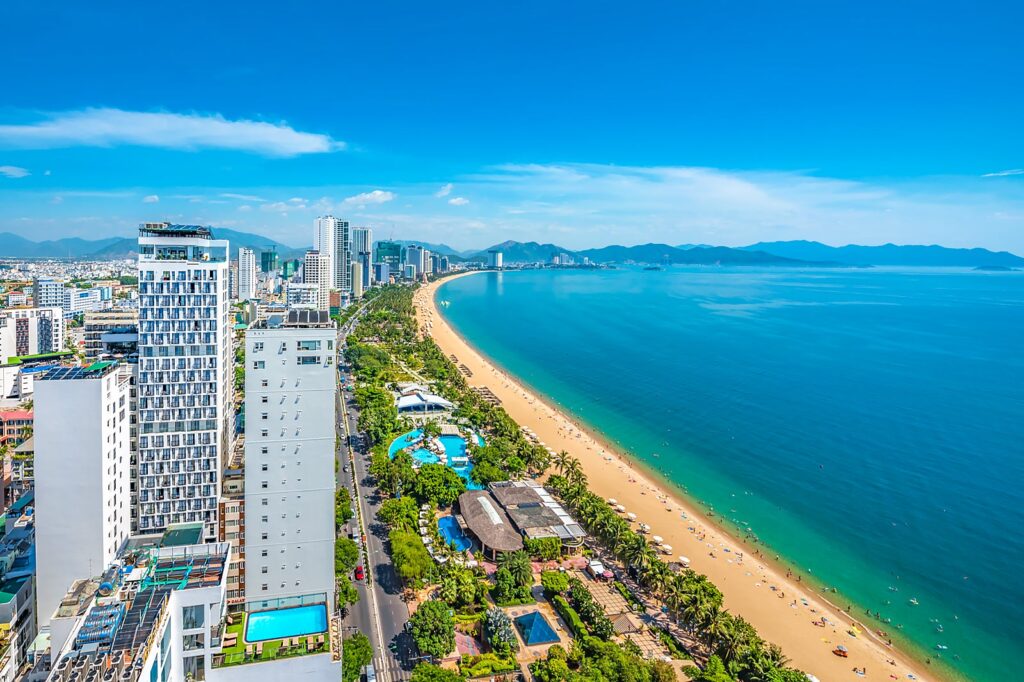
April
Following the vibrant aura of March, April continues to offer splendid weather across the country. Whether you choose Northern Vietnam, Central Vietnam or Southern Vietnam, this period remains an excellent choice for travel. It draws in larger crowds of visitors eager to immerse themselves in a variety of activities and experience Vietnam’s diverse landscapes. The combination of warm temperatures and minimal rainfall creates a favorable environment for exploration and adventure.
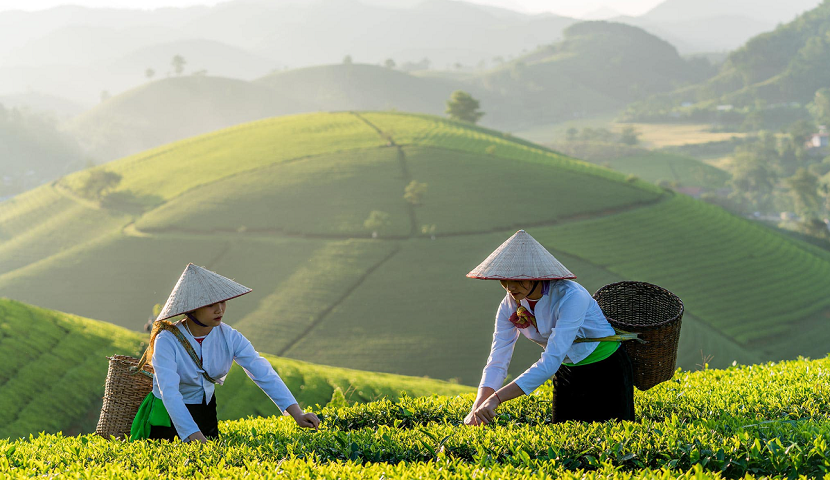
May
May ushers in rising temperatures, presenting a chance for travelers to escape the busier and more expensive April high season. Although the peak tourist influx has subsided, the weather remains inviting, making it an appealing time to explore various destinations. Rainfall has not yet become a significant factor, although sporadic rain showers may occasionally dot the landscape, particularly in the northern and southern regions towards the end of the month.

June
June embodies a mix of weather patterns across Vietnam, offering varied experiences for travelers with diverse interests. While sporadic rain might impact the northern and southern regions, central areas like Hanoi, Mai Chau, and Halong Bay tend to enjoy clear blue skies and pleasant weather. This creates an ideal environment for outdoor activities and exploration.
However, the true gem of June lies in central Vietnam, which boasts abundant sunshine and minimal rainfall. Destinations such as Lang Co and Hoi An beckon travelers with their picturesque beaches and serene atmospheres, making them perfect retreats for relaxation and coastal enjoyment. Furthermore, June provides an exceptional opportunity for an off-season getaway, allowing travelers to experience the country before school holidays commence in the following month.

July
July continues to offer diverse weather experiences throughout Vietnam, with central regions emerging as the preferred destination due to its consistent sunshine and limited rainfall. In central Vietnam, the climate is ideal for outdoor activities and relaxation on the beach, providing travelers with a splendid opportunity to soak in the sun and partake in water-based activities.
While sporadic showers may make appearances in other parts of the country, they typically do not significantly impact travel plans. For those who wish to explore Vietnam’s enchanting landscapes during this time, July still offers a favorable environment for a memorable journey.
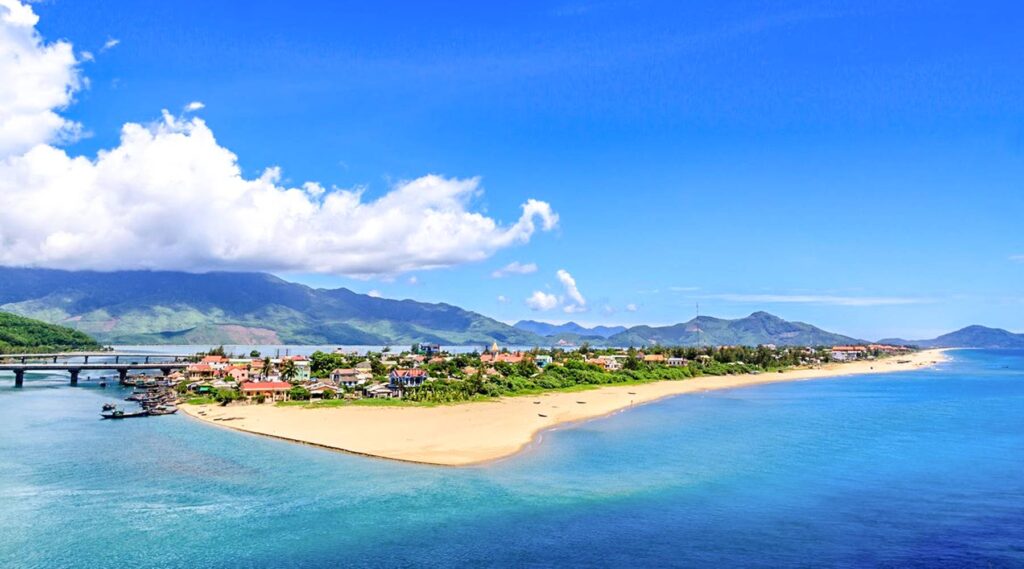
August
August invites travelers to embark on a journey through Vietnam, exploring its multifaceted regions and experiencing their distinct weather patterns. Central Vietnam, once again, emerges as the favored destination during this period, with inviting weather and ample sunshine.
While central areas continue to shine, the rest of the country still presents a wealth of opportunities for exploration, even with occasional rain showers. The Vietnamese low season prompts hotels to offer attractive promotions, creating a budget-friendly environment for travelers seeking affordability without sacrificing quality experiences.

September
September presents a unique opportunity for travelers to experience the tail end of the dry season along the central coast of Vietnam. This period is characterized by a last burst of sunshine before increased rainfall occurs later in the month. It’s a prime time to capture the natural beauty of coastal destinations and engage in various outdoor activities.
Both the northern and southern regions of Vietnam typically experience more frequent rain during September. However, this season also brings about the advantage of cost-effective travel, as accommodations and services tend to be more budget-friendly.
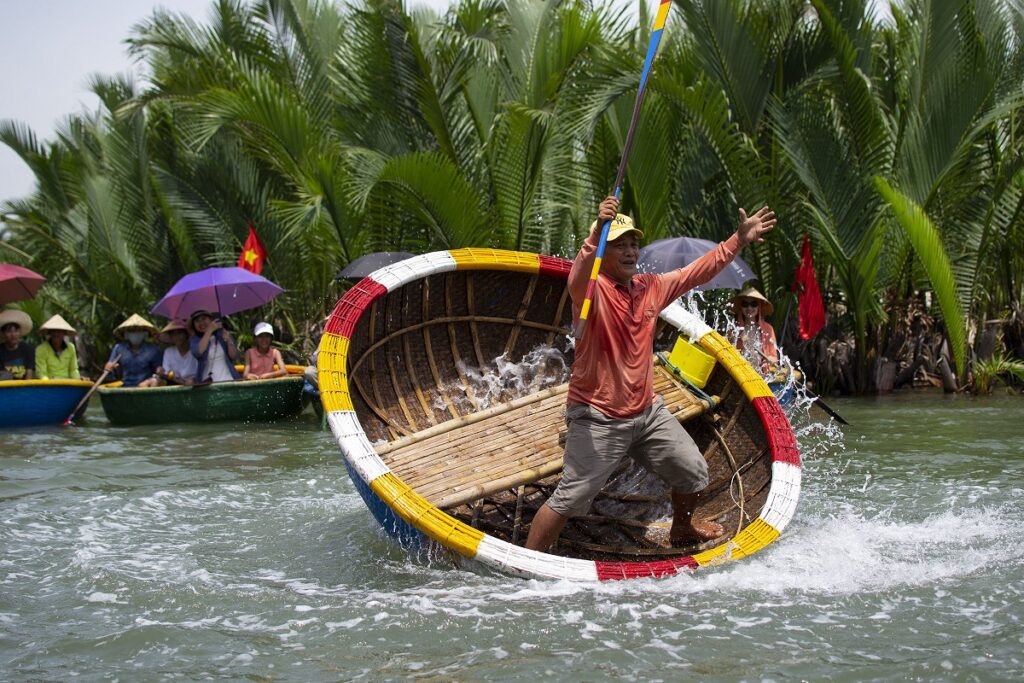
October
October ushers in a dynamic shift in weather patterns across Vietnam, offering travelers a chance to explore a new facet of the country’s beauty. The return of the sun to the northern Vietnam creates an optimal setting for adventure in destinations like Sapa and Ha Giang. These areas showcase stunning landscapes, making October an ideal time for trekking and exploring off-the-beaten-path routes.
While October might not be the prime season for a traditional beach vacation, it offers a wealth of other opportunities for discovery. Travelers seeking a unique and less crowded experience can relish the diverse landscapes, cultural treasures, and engaging activities that Vietnam has to offer.
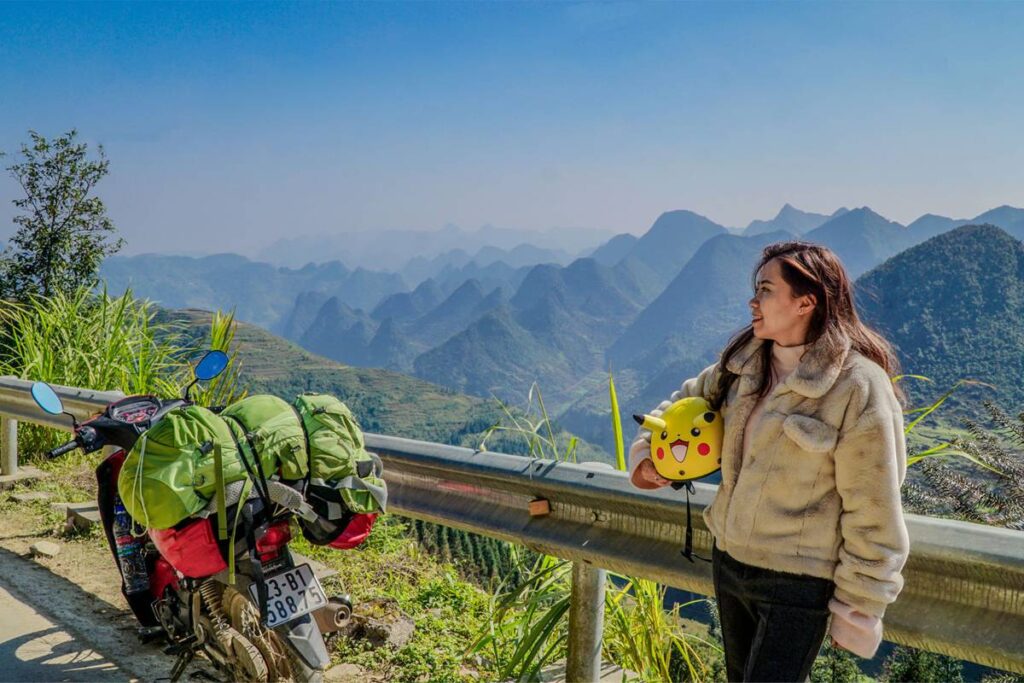
November
November ushers in a renewed sense of travel enthusiasm, as high season returns to Vietnam, drawing visitors eager to explore the country’s diverse regions. The colder winter months in the north attract travelers seeking cooler weather and cultural immersion. As November progresses, the entire country transitions into a hot and dry period, save for the central Vietnam, which may experience sporadic showers.
Despite the possibility of occasional rain in the central Vietnam, the vibrant atmosphere and numerous attractions in other parts of the country continue to beckon travelers. From bustling cities to tranquil landscapes, Vietnam’s November landscape offers an array of experiences for every type of traveler.
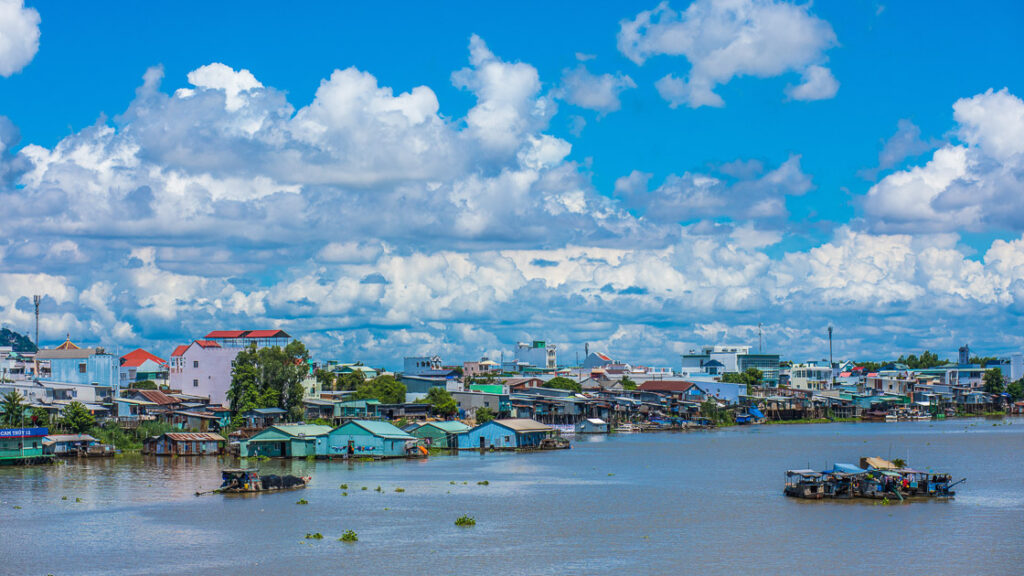
December
December invites travelers to celebrate the year’s end amid Vietnam’s captivating landscapes and diverse cultural offerings. The weather remains hot and dry for most of the country, creating an inviting atmosphere for exploration and adventure. While the central region may still experience occasional rainfall, the rest of Vietnam offers an environment conducive to a variety of activities.
Phu Quoc’s beach season makes a grand return, captivating travelers with its golden shores and clear waters. For those planning to visit during the Christmas period, early booking is advisable, as availability might become limited due to the holiday rush. Whether travelers seek cultural exploration, outdoor adventures, or tranquil beach escapes, Vietnam’s December promises a rewarding and memorable journey.

In Conclusion – Figure Out Best Time To Visit Vietnam?
Navigating the optimal time to visit Vietnam is akin to unraveling a rich tapestry of weather, festivities, and exploration. As the seasons ebb and flow, so too does the country’s allure, offering a diverse array of experiences for every kind of traveler. Whether you’re drawn to the lush landscapes of the northern Vietnam, the bustling cities of the south, or the tranquil shores that dot the coastline, Vietnam’s multifaceted charm promises something unique for everyone.
Ultimately, the best time to visit Vietnam is a subjective endeavor, guided by your interests, preferences, and desired experiences. By delving into the nuances of each month’s weather, festivals, and offerings, you’re equipped to make informed choices that align with your travel aspirations.
Keep in mind that while this guide provides insights into the country’s rhythms, Vietnam’s ever-evolving nature ensures that every season and month has its own treasures waiting to be uncovered. So, whether you seek vibrant festivities, serene natural beauty, or immersive cultural encounters, let the best time for you be the moment you embark on your unforgettable Vietnamese adventure.

